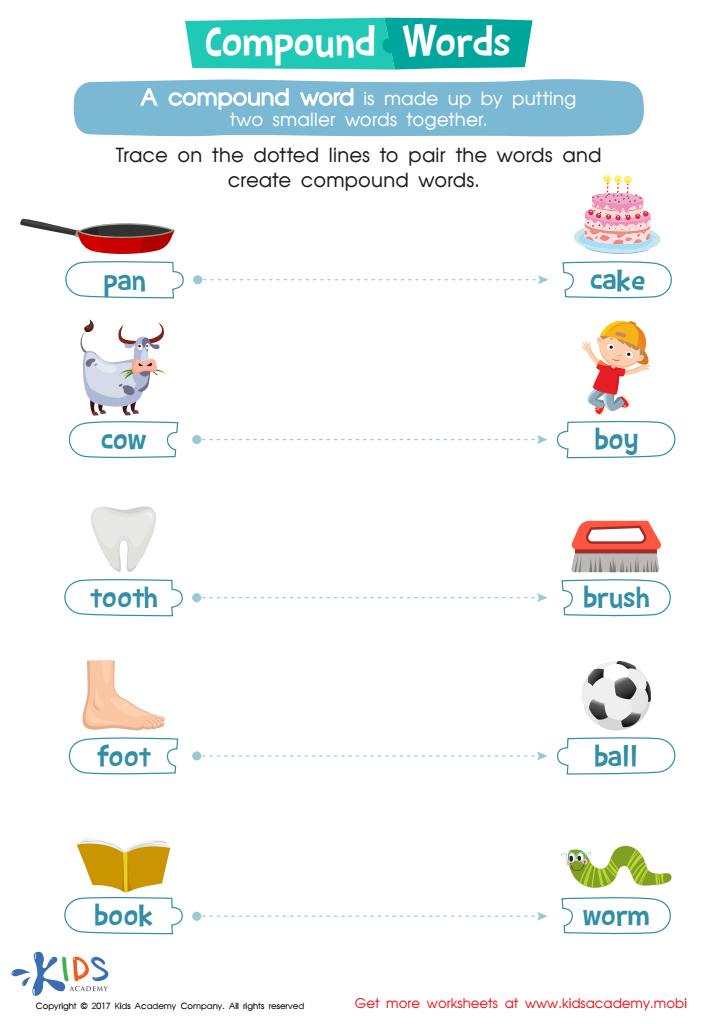Word structure comprehension Worksheets for Kids
1 filtered results
-
From - To


Compound Words Word Structure Worksheet
Question/Answer
What does the Word structure comprehension skill mean when it comes to Grade 1 Grammar learning?
Word structure comprehension skill in Grade 1 Grammar learning refers to the ability of students to understand and identify the basic parts and patterns of words, such as prefixes, suffixes, and root words. It involves recognizing how these components contribute to word meanings, and how they can be used to decode and spell new words.
How does the mastery of the Word structure comprehension skill affect a student's performance at an early age?
The mastery of Word structure comprehension skill at an early age significantly enhances a student's reading fluency, vocabulary development, and understanding of complex sentences.
How to test a Grade 1 student’s Word structure comprehension skills?
To test a Grade 1 student's word structure comprehension skills, conduct activities like matching words to pictures, using fill-in-the-blank sentences with options, identifying rhyming words, segmenting and blending sounds in words, and recognizing simple prefixes or suffixes. Incorporating these exercises can effectively assess their understanding of how words are formed and their ability to apply this knowledge.
 Assign to the classroom
Assign to the classroom

.jpg)










